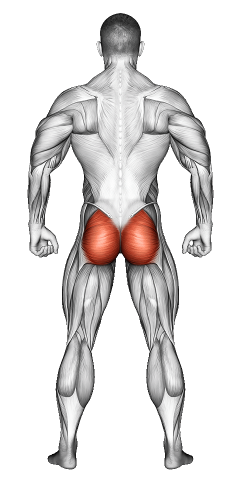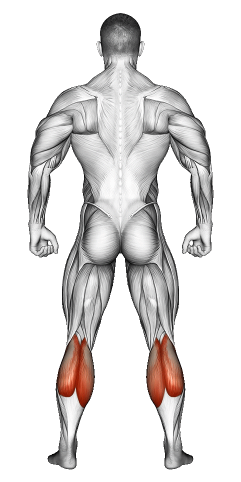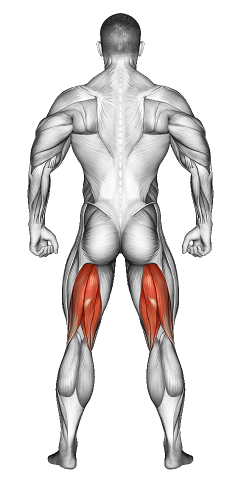Pause Jump Squat: Video Tutorial & Exercise Guide

Written By: Claude Michael
Updated: Oct 13, 2024
| Workout | Pause Jump Squat |
| Primary Muscle Group | Quads |
| Secondary Muscle Group | Glutes, Calves Hamstrings |
| Equipment Required | Bodyweight |
| Force Type | N/A |
| Mechanics | Compound |
| Exercise Type | Cardio |
| Difficulty | Intermediate |
Pause Jump Squat: Video Tutorial & Exercise Guide
- 1.Pause Jump Squat: Muscle Groups
- -1.1Primary Muscle Group
- -1.2Secondary Muscle Group
- 2.Pause Jump Squat: Step-by-Step Guide
- 3.Pause Jump Squat: Overview
- 4.Pause Jump Squat: Benefits
- 5.Pause Jump Squat: Pro Tips & Advanced Techniques
- 6.Pause Jump Squat: Progression Plan
- 7.Pause Jump Squat: Frequently Asked Questions (FAQs)
Secondary Muscles Group
Pause Jump Squat: Step-by-Step Guide
- Step 1: Stand with your feet shoulder-width apart, toes pointing slightly outward. Keep your chest up and core engaged.
- Step 2: Lower into a squat position by bending your knees and pushing your hips back, lowering your body until your thighs are parallel to the ground. Pause and hold this squat position for 2-3 seconds.
- Step 3: After the pause, explode upward into a jump by pushing through your heels, extending your legs, and jumping as high as you can.
- Step 4: Land softly on the balls of your feet and immediately lower back into the squat position, pausing for 2-3 seconds before repeating the movement.
- Step 5: Repeat for the desired number of repetitions, maintaining control during the pause and explosive jump phases.
Pause Jump Squat: Overview
The Pause Jump Squat is a variation of the traditional jump squat that includes a pause at the bottom of the squat to increase time under tension and emphasize muscle control. This explosive plyometric exercise primarily targets the quadriceps, glutes, hamstrings, and calves while also engaging the core for stability.
By pausing before the jump, you enhance muscle activation and increase the intensity of the workout, making it ideal for building explosive power, strength, and endurance.
Pause Jump Squat: Benefits
The Pause Jump Squat enhances lower body strength and explosiveness by combining isometric holds (the pause) with dynamic movement (the jump). This exercise improves power output, balance, and coordination while also increasing muscle endurance. The pause forces the muscles to stay under tension longer, which can lead to greater strength gains and improved muscular endurance.
Additionally, this movement can be a great cardiovascular exercise, helping to boost metabolism and burn fat as part of high-intensity interval training (HIIT) or plyometric routines.
Pause Jump Squat: Pro Tips & Advanced Techniques
Focus on maintaining proper squat form during the pause to avoid rounding your back or allowing your knees to collapse inward. Keep your core tight to support your lower back and maintain stability. For an additional challenge, increase the pause duration to 4-5 seconds or add resistance using a weighted vest or dumbbells. Aim for a controlled landing to avoid injury and maximize the effectiveness of each rep.
Pause Jump Squat: Progression Plan
Beginner
Intermediate
Advanced
Pause Jump Squat: Frequently Asked Questions (FAQs)
What muscles do Pause Jump Squats target?
+Pause Jump Squats primarily target the quadriceps, glutes, hamstrings, and calves while also engaging the core for stability.
Can beginners perform Pause Jump Squats?
+Yes, beginners can perform this exercise by starting with bodyweight only and focusing on mastering the form before increasing the intensity.
How can I make Pause Jump Squats more challenging?
+Increase the pause duration, add weight with a dumbbell or weighted vest, or jump higher to make the exercise more challenging.
What common mistakes should I avoid during Pause Jump Squats?
+Avoid rounding your back or letting your knees cave inward during the squat. Focus on landing softly and maintaining control during both the pause and the jump.
How often should I include Pause Jump Squats in my routine?
+Incorporate Pause Jump Squats 1-2 times per week as part of your lower-body or plyometric routine to improve strength, power, and endurance.
Share
Don’t Wish for It, Work for It – Join the FlexXP Newsletter Today!
Thank you for signing up for the FlexXP Newsletter!
This site is protected and the Google Privacy Policy and Terms of Service apply.



